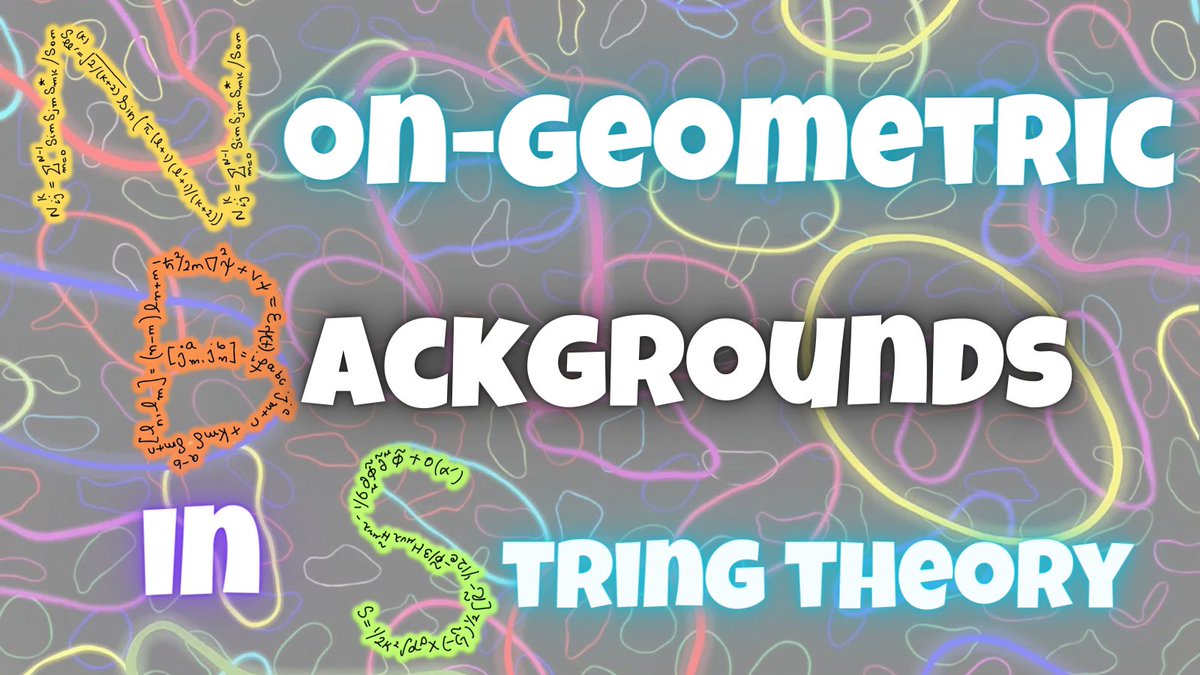
Ph.D. student at @ualbany NY | Formerly at ICTP | Theoretical Physics | QFT | String Theory & CFT | Educator | https://t.co/9y3WDHVpq5 on Bluesky
How to get URL link on X (Twitter) App


 Firstly, let’s review the basic idea of a cosmological constant. The Einstein equation without a cosmological constant is still a consistent equation.
Firstly, let’s review the basic idea of a cosmological constant. The Einstein equation without a cosmological constant is still a consistent equation.
 Recall that the mass term of a scalar field φ is simply proportional to φ2. Vector fields have similar mass terms. For fermions, the mass term is written in terms of their left handed part and right handed part. All of these forms are given in the picture below.
Recall that the mass term of a scalar field φ is simply proportional to φ2. Vector fields have similar mass terms. For fermions, the mass term is written in terms of their left handed part and right handed part. All of these forms are given in the picture below.

 We start with the Einstein field equation (EFE) and convert it to a form that is used to solve this equation. This form is called the trace reversed form and to derive it, we contract EFE with the metric tensor.
We start with the Einstein field equation (EFE) and convert it to a form that is used to solve this equation. This form is called the trace reversed form and to derive it, we contract EFE with the metric tensor.

 I will use the natural units (units used in high-energy physics) in this article. In these units, the unit of length is the inverse of the unit of energy (i.e. [Length]=[Energy]^(-1)).
I will use the natural units (units used in high-energy physics) in this article. In these units, the unit of length is the inverse of the unit of energy (i.e. [Length]=[Energy]^(-1)).

 A guide to this review
A guide to this review
 For this post, a basic understanding of tensor analysis and special relativity is assumed to understand this post. 2/28
For this post, a basic understanding of tensor analysis and special relativity is assumed to understand this post. 2/28

 A basic understanding of global symmetries unitary operators (acting on quantum states and operators) and local operators is required to read this post. This topic may look esoteric but it has applications in well-known theories of physics, including the standard model. 2/28
A basic understanding of global symmetries unitary operators (acting on quantum states and operators) and local operators is required to read this post. This topic may look esoteric but it has applications in well-known theories of physics, including the standard model. 2/28 

 A basic understanding of field theory is required. I'll try to make it as accessible as I can (without distorting the results).
A basic understanding of field theory is required. I'll try to make it as accessible as I can (without distorting the results).
 In electrodynamics (using Newtonian space and time) the magnetic field is represented by a vector potential A. In order to describe the electric field, we need another scalar quantity called the scalar potential. 2/13
In electrodynamics (using Newtonian space and time) the magnetic field is represented by a vector potential A. In order to describe the electric field, we need another scalar quantity called the scalar potential. 2/13 